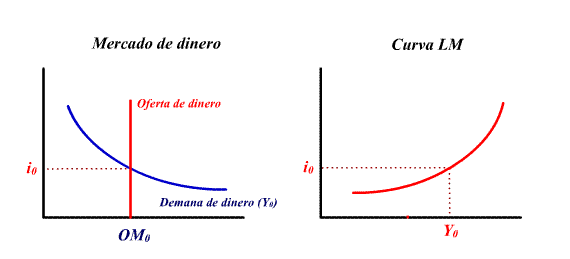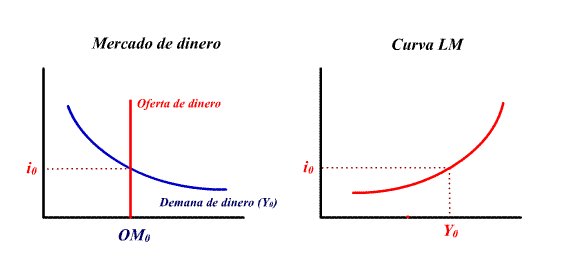Monetary Policy
The
fundamental objective of any Central Bank is to maintain price
stability and interest rates, which in turn should allow the economy to
maintain a high level of growth.
The central banks act when the economy veers
from their path:
If
the economy slows down they will try and relaunch it by lowering
interest rates to encourage investment.
If the economy grows at an
excessively high speed, the government will try and slow
it down a little to avoid inflationary tensions that may end up
effecting the economy negatively. Therefore, the government will try
and increase interest rates to reduce investment and freeze growth.
The interest rate is the key
variable that connects the money market with the goods market.
Until now, we had consdiered that monetary supply was fixed in the
short term, but this was a simplification. The Central Banks will
increase or reduce the quantity of money in the system as a way to act
on the interest rates.
The Central Banks can influence the monetary supply:
Through
the monetary base
Through
the coefficient mandatory bank reserve.
The monetary policy can be expansive
(increase in the monetary supply):
Decrease
the rediscount rate
Purchase public debt from banks
Reduction in the legal
mandatory bank reserve (this measure is no longer used)
Or restrictive (decrease
in the supply of money):
Increase
the rediscount rate
Sell
public date to banks
Increase the legal mandatory
bank reserve (this measure is no longer used)
How do variations in the monetary supply
effect the LM curve?
If the monetary supply increases, the curve
moves towards the right, which makes the balanced interest rate
decrease.
For the LM curve this means that for a determined level of income the
interest rate is less: this curve will go down.

If the monetary supply decreases its curve will move
towards the left, which will cause the balanced interest rates to
increase.
For the LM Curve this implies that for a determined level of income,
the interest rate is greater: this curve will move up.

The Central Bank, through the monetary policy, can control the
evolution of the interest rates in the short term. However, in the long
term, it is the market (law of supply and demand) that determines them.
In the long term, the interest rates depend,
on the whole, on the expectations of inflation:
If
a country has historically efficienty fought against inflation (take
Germany for example) through its economic orthodox policy, the interest
rate in the long term will remain low.
If, on the contrary, a country has not dealt with inflation very well
in the past (we prefer not to give examples), the interest rates, in
the long term, will be quite high.

